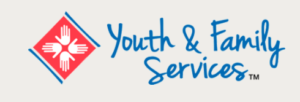
Tribal Youth Case Study
Organization: Rapid City, SD
URL: https://www.youthandfamilyservices.org/
Program Name: Stronger Families
Program Setting: High school classrooms
Location of Instruction: Some classes were held on the Pine Ridge Reservation and some were held at Youth and Family Services in Rapid City.
Length of Instruction (# of Sessions and Hours per Session): 11 hours of instruction + 1 hour for pre- and post-survey.
Class Size: Ranged 8-30
Target Audience: Youth in high schools in western South Dakota and on the Pine Ridge reservation.
Audience Demographics: Reservation Youth: 100% Native American. Rapid City Youth: 50% Native American
How was Cultural Adaptation Incorporated? The Medicine Wheel plays an important role in the culture and values of the Lakota tribe. The Medicine Wheel circle is seen as the basis for every part of human and animal like, earth and sky and even the universe and stars.
The Medicine Wheel
The Lakotas believe that all good things are represented with the circle and the Medicine Wheel is sacred. The four parts of the Medicine Wheel are the teachings about life, the seasons, animals, nations and directions. The center represents the earth and sky. Each direction: North, East, South and West encompasses the teaching of life and each person’s place in society.
The Medicine Wheel did not replace any part of the curriculum but was added to the discussion in every lesson and activity to help illustrate that the Lakota values were represented. The Medicine Wheel incorporates the four stages of man from birth to death.
Click here for more information on the Lakota Medicine Wheel.
Challenges? Making curriculum relatable to the Native Americans of the Lakota tribe on the Pine Ridge Reservation. Pine Ridge Reservation is the poorest county in the United States. 97% of the population lives far below the U.S. federal poverty line with a median household income ranging between $2,600 and $3,500 per year. Important to gain trust with the tribe. Share information so they feel they are helping and the people being served are being helped.
Excerpts from The Atlantic about challenges in the tribe:
“We are part of the Seventh Generation … prophesied to be the generation that creates those individuals that will spearhead the economic, spiritual, and social renewal,” Rosales said. The tall, slim 19-year-old sported a sharp haircut, Nike skate shoes, khaki-colored jeans, and a thick, crew-neck sweater when we spoke. Rosales was referring to a prophecy made by the Oglala Sioux leader Crazy Horse, who shortly before his death in the late 1800s predicted that a cultural renaissance was afoot. “We are going to be that group of people that makes that prophecy come true,” Rosales said. “Red Cloud is helping us to do that.”
Jacob Rosales, Red Cloud High School Graduate
Far too often, where Native students are at socially and emotionally is not where they should be. According to Cuny, that’s largely because schools lack the resources to adequately equip kids with the skills they need to persist once they’re no longer engulfed by the safety net that is high school on the reservation. “Schools—their primary responsibility is education, but particularly in circumstances like this, teachers are also tasked with being counselors and social workers and nurses,” Cuny said. “This mental-health element, it’s not seperate from this question about college attainment, and college retention, because you can’t improve their educational-achievement levels without addressing first their mental health and their well-being.”
Charles Cuny Jr., Little Wound School Superintendent
Funding: Healthy Marriage and Relationships– Office of Family Assistance
Curricula Used: Relationship Smarts PLUS
Curricula Benefits: Strong focus on tactile learning with hands-on activities around relationships and family values.
Instructors: Reservation Instructor was a member of the Lakota tribe. Rapid City Youth Instructor was a staff member of Youth and Family Services
Student Workbooks: Used the hard copy student journals
Incentives to Teachers and Students: The instructors were provided a $25 Walmart gift card
Student Incentive: Very popular! Upon completion they received a pair of sneakers of their choice. Students have very little money and new sneakers were a big status symbol.
Observable Outcomes: Observable outcomes for the tribal students were the same as non-tribal students. Early in the curriculum, in Lesson Two the participants are able identify the values that are important to them. These individual personal values are infused in the following lessons, and the Medicine Wheel was associated with these values.
Tips for Others: It is important to have a tribal member doing the instruction to add credibility when working on the reservation.

